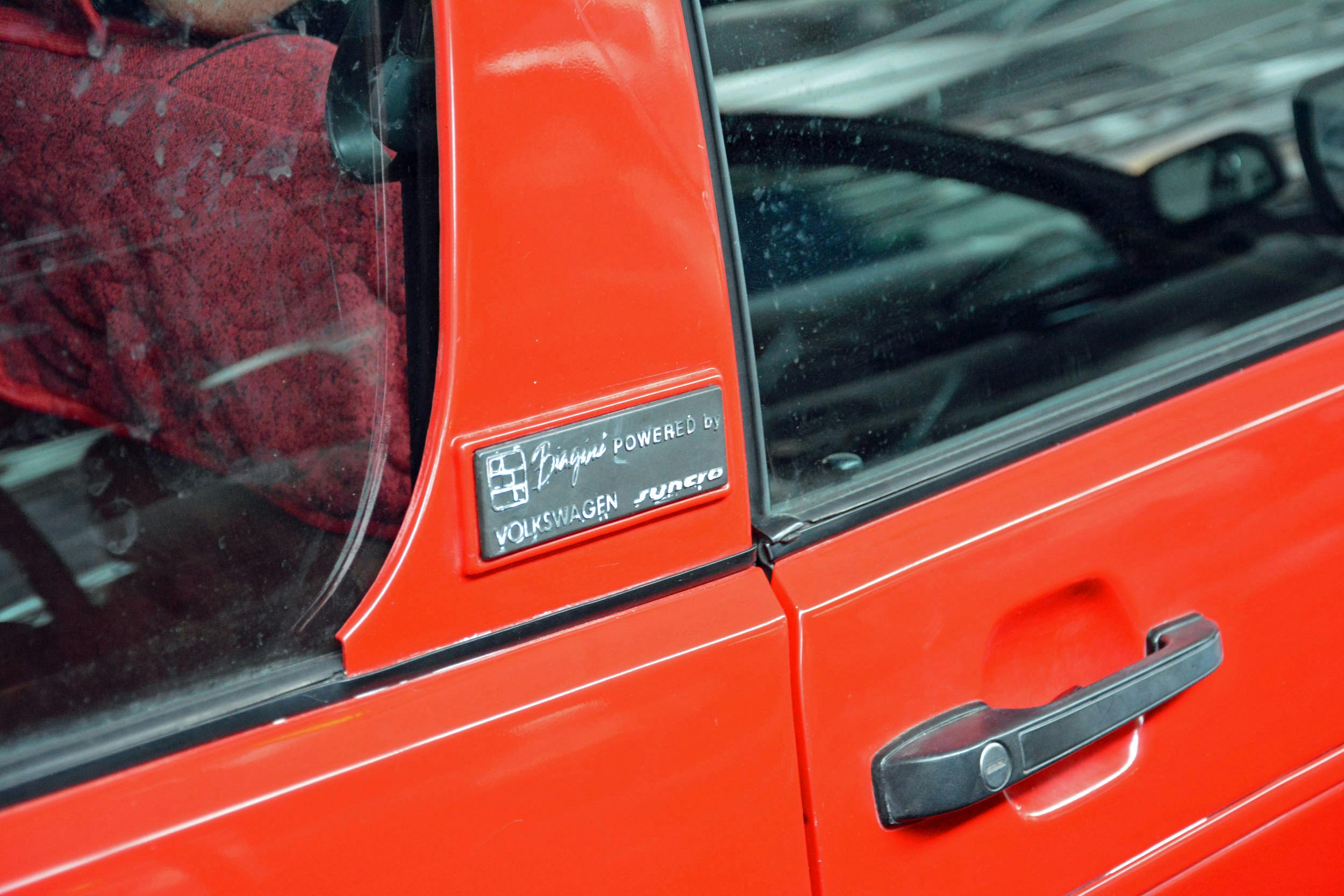Media | Articles
Italy built the off-road, convertible Golf that VW never would
Volkswagen turned the original Golf (sold as the Rabbit in the United States) into a convertible in 1979 and alchemized the second-generation model into an off-roader called Country in 1990. While these two models should have co-existed without crossing paths, an Italian company named Biagini played a game of automotive “will it blend?” and fused the Cabriolet and the Country to create the eccentric Passo.
Biagini’s origins are as opaque as the blue smoke that comes out of a Trabant’s exhaust system. The firm was part of a group called Ali Ciemme that devoted a substantial amount of time and effort to modifying Romanian-built ARO off-roaders in the 1980s. When and why the Golf appeared on Biagini’s radar isn’t clear, but its engineers and designers took full advantage of the little hatchback’s Lego-like simplicity.
The brief was reasonably straight-forward: Take a Golf Cabriolet and fit it with the Golf Country’s driveline and suspension system. Biagini designed Y-shaped subframes in-house to make the swap work and dialed in 10.2 inches of ground clearance—that’s slightly more than a base 2022 Jeep Wrangler has.

At first glance, the Passo looks like a Golf on steroids. Biagini installed a beefier front bumper with a brush guard, flares over the wheel arches, and a rear-mounted spare-wheel carrier. The hood and fenders were redesigned to give the front end a more rounded look, and Biagini kept the Golf’s soft top but added a composite window. It also put “Biagini powered by Volkswagen Syncro” emblems on the B pillars to answer one of the many questions you’d have if parking next to a Passo at the local bar.
Zoom in and you’ll notice that the Italian shop raided the nearest parts bin. Up front, the Passo-specific grille is flanked by headlights sourced from the Fiat Panda. It’s a look that works better than you might assume, partly because Giugiaro designed both the original Golf and the original Panda. The vertical rear lights come from the first-generation Panda as well, and a tailgate provides access to the trunk.
Marketplace
Buy and sell classics with confidence
While the Passo that’s part of the Volkswagen collection in Wolfsburg, Germany, was locked when I last visited, I can tell you that the interior is mostly standard Golf Cabriolet fare. There are two exceptions: The dashboard gains a grab handle that stretches from side to side, and the front seats are Recaro units.
The most common engine used was a Volkswagen-sourced, 1.8-liter four-cylinder that sent about 89 horsepower and 107 pound-feet of torque to the four wheels via a five-speed manual transmission. Some of the earlier units built benefited from a higher output because they weren’t equipped with catalytic converters, and Biagini’s marketing material notes a 2.0-liter was available in some markets (including Italy). Biagini retained the Golf Country’s four-wheel-drive system and doing so made the Passo eligible for Austrian citizenship: Volkswagen co-developed the hardware with Steyr-Daimler-Puch.
Production figures vary wildly depending on who you ask, and Biagini is no longer around to set the record straight. Some historians claim about 65 units of the Passo were built between 1990 and 1993. Others believe the correct figure lies in the vicinity of 100, while Volkswagen’s archives department states “around 300 four-wheel-drive Golf Country models were converted into convertibles.” Regardless of who you believe, you’re more likely to spot a Ferrari LaFerrari than a Biagini Passo on your next trip to Italy, especially since the one point no one disputes is that rust issues decimated the Passo population.

Biagini closed in 1993 so it wasn’t able to write a new Passo chapter when the third-generation, Golf-based Cabriolet began arriving in showrooms. Besides, Volkswagen didn’t develop a successor to the Golf Country; making a second-generation Passo would have required a much bigger investment.
Volkswagen’s droptops remained low to the ground until the T-Roc Cabriolet arrived in 2020. As for the Passo, it’s an obscure footnote in the Golf’s history that only the most hardcore enthusiasts remember.
Check out the Hagerty Media homepage so you don’t miss a single story, or better yet, bookmark it.



































